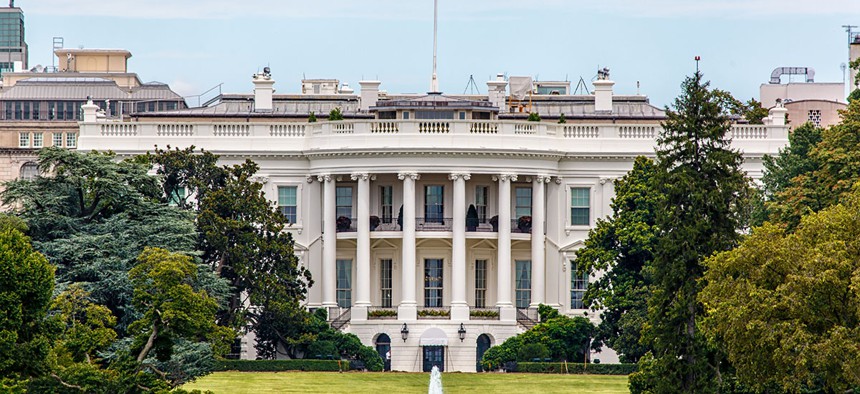White House Says Agencies Reported 77,200 Cyber Incidents in 2015

Chris Parypa Photography/Shutterstock.com
"The increasing number and impact of these incidents demonstrate that continuously confronting cyberthreats must remain a strategic priority," according to a March 18 report on compliance with agency information security laws.
The annual performance review for agency information security is in and, while it does not mention there were big breaches this year, the scores reflect an executive branch in need of a significant IT tune-up.
During fiscal 2015, federal departments collectively reported 77,183 cybersecurity incidents, a 10 percent uptick from the number reported the previous year.
"The increasing number and impact of these incidents demonstrate that continuously confronting cyberthreats must remain a strategic priority," according to a March 18 report on compliance with agency information security laws.
At the Pentagon, the number of reported "social engineering" incidents aimed at tricking personnel into revealing information rose from 182 to 290. The military scored 15 percent on its "anti-phishing" protections against emails and websites that solicit sensitive information.
Not said: In July, attackers duped Joint Staff personnel into opening emails that helped a suspected nation state penetrate a Defense Department unclassified network.
An overall rise in the number of incidents reported governmentwide over the past three years is partly thanks to agencies enhancing their detection tools and techniques, the White House report states.
But cybersecurity awareness is still a sore point, in general.
Most major federal agencies -- 21 out of 24 -- earned a two or lower on a five-point scale for the maturity of their real-time "continuous monitoring" of security controls, "which would not be considered effective," an associated audit by department inspectors general found.
Another thing left unspoken: The Office of Personnel Management learned last summer that outdated IT and a stolen password facilitated a 2013 attack that had affected 21.5 million people by spring 2015.
Federal departments received a D average, or 68 percent, on their ability to detect unauthorized software and prevent it from executing, according to the report. The departments of Defense, Treasury, Energy and State are among the 14 agencies that could not see unauthorized devices on their unclassified networks at the target rate.
But it was people, not hardware, who tricked Treasury's IRS.gov identity verification system to access financial information on 700,000 taxpayers. (This incident also was not in the review.)
The report highlights a new initiative unveiled in President Barack Obama's 2017 budget, called the Cybersecurity National Action Plan, which requires agencies undertake a number of steps to boost digital security across the government and private sector.
The actions "build upon unprecedented progress to strengthen federal cybersecurity that took place in fiscal year 2015 due to the efforts of the Office of Management and Budget, the Department of Homeland Security and other federal agencies," the White House says.
It is unclear if agencies would have achieved such progress were it not for the OPM hack. In June, the same month the intrusion was disclosed, OMB launched a 30-day "cyber sprint." The report states, "Agencies immediately took steps to further protect federal information and assets and improve the resilience of federal networks."
Civilian agencies followed through on a 2004 mandate that required the use of smartcards for accessing federal networks. Smartcard use increased from 42 percent governmentwide to 72 percent during the emergency fix-it session. As of Nov. 16, 2015, about 81 percent of federal computer users were using cards to log in.
Aside from requiring smartcards for network access, agencies were instructed to patch "critical vulnerabilities," which they did by December 2015, reducing 99 percent of the 363 security holes present before the sprint.
DHS also promoted the use of EINSTEIN, a governmentwide firewall that checks for and blocks indicators of hack attacks at the network perimeter. The Government Accountability Office slammed the $6 billion system in January for ignoring common security vulnerabilities and not checking Web traffic. The intrusion-blocker feature of the technology is activated at 49 percent of federal civilian agencies, covering roughly 1.1 million users, according to Friday's report.



